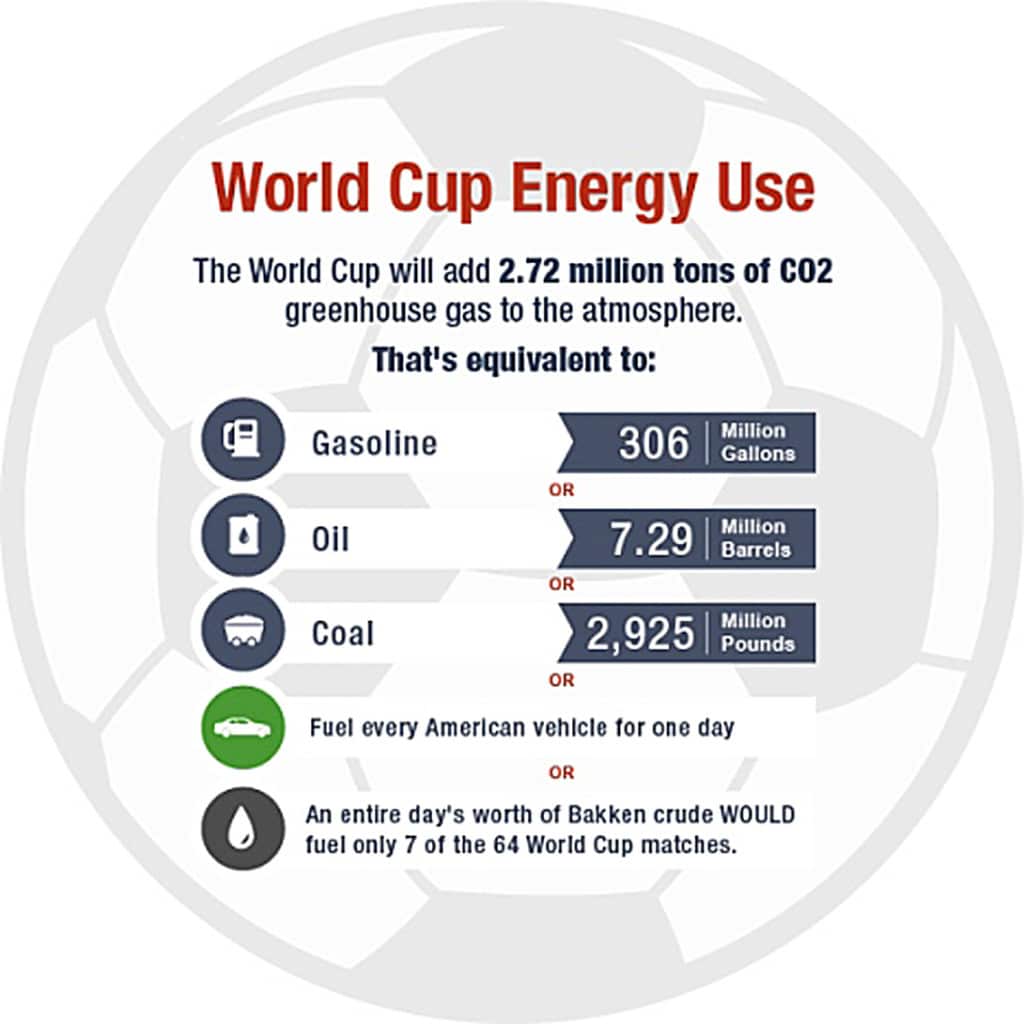Like the rest of the soccer fans around the world, I’ve been watching the 2014 FIFA World Cup Brazil since day one. Introduced to soccer the untraditional way…through video games (EA Sports FIFA ‘98), I fell in love with futbol as I controlled players like Thierry Henry, Patrick Kluivert, and the current team USA head coach, Jurgen Klinsmann.
Now older, more observant and environmentally conscience, I’ve wondered, what effects are being created by such an event on Brazil. Is the tournament effecting the native Brazilians’ way of life? How much energy is being consumed during the tournament? 12 Stadiums are being used for the tournament, so factor in the energy used for stadiums, venues around the stadiums and country, the networks and broadcasting the tournament, along with transporting fans and teams in, out and around the country. Then add ground transportation for everyone there as well. These are just the major energy consumers; the list is much longer than you think.
FIFA did a study, and based off the energy used at the 2010 World Cup in South Africa, just TV operations will inject 24,670 tons of CO2 to the Brazilian atmosphere. This is equivalent to burning 13,250 tons of coal or 2.8 million gallons of gas. FIFA’s estimation of the complete carbon footprint that would be left behind in Brazil came in at 2.72 million tons of CO2 (306 million gallons of gas). The energy consumers FIFA accounted for was a similar list to the above list I created. This included stadiums, training grounds, concessions, festivals, travel, hotels, etc.
These numbers may discourage you from wanting to ever attend an event of this magnitude. It clearly reveals that we contribute to the strain on the environment in one specific area for 30 days every four years. Yet, it’s studies like this that help us to decrease the events’ total energy consumption, and move towards cleaner fuels, more efficient energy consumption and the innovation that it takes to create and incorporate better ways of life into these larger than life events.
Image courtesy of: oilprice.com

